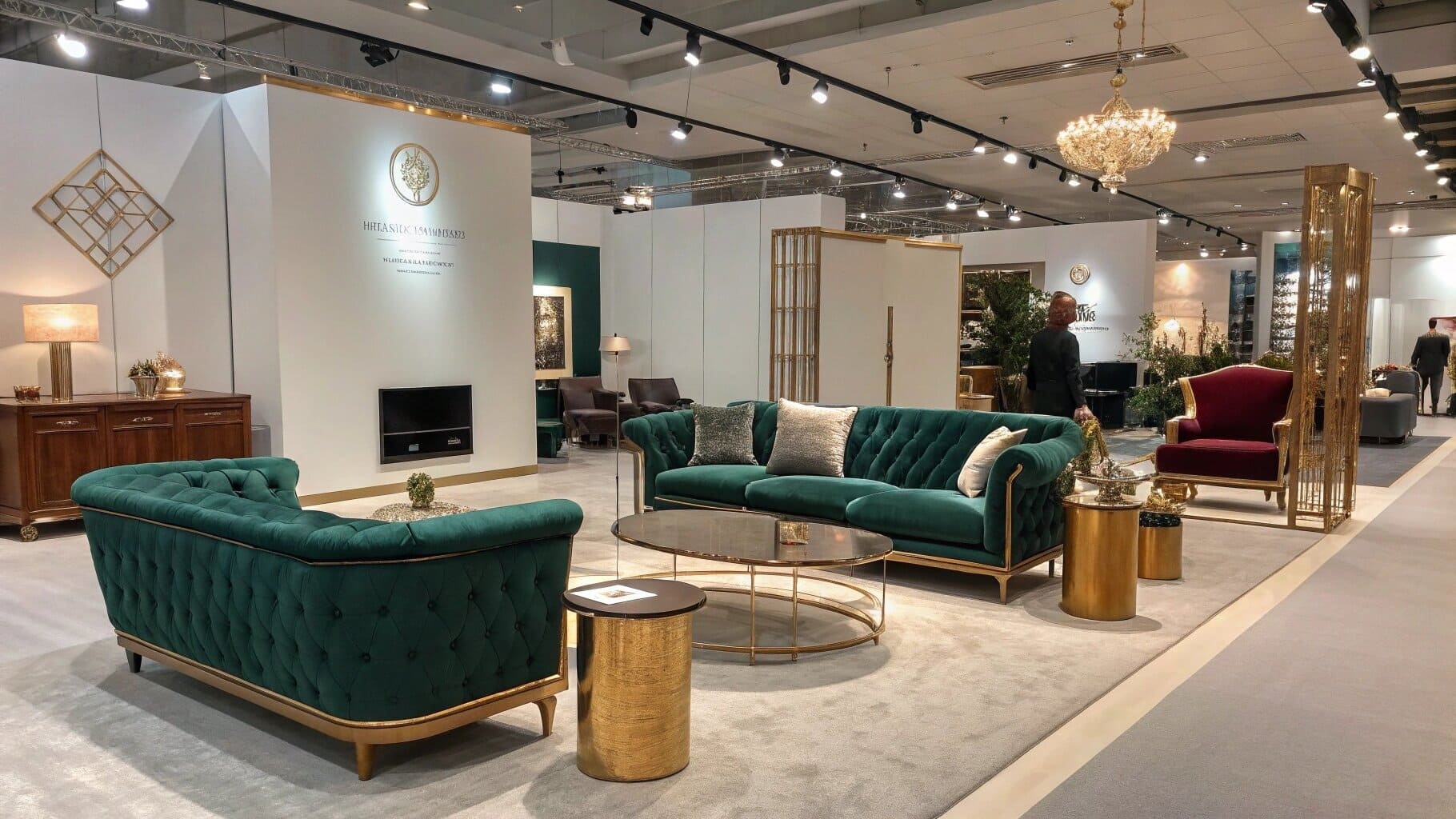The luxury furniture market is competitive, with high prices and low transaction frequency. Independent retailers need a strategic approach to reach their target audience and create a lasting brand.
The high-end furniture market is characterized by clear target demographics, high-end product expectations, and fierce competition. Independent retailers must navigate these elements while differentiating their brand to thrive in the market.

The luxury furniture market presents significant challenges and opportunities. Retailers must overcome competition from established brands while establishing a niche market. By focusing on personalized service, unique designs, and superior quality, independent retailers can build strong customer loyalty. Starborn Furniture, as a direct factory supplier, offers unique advantages that can greatly enhance your competitive edge in this space. Moreover, by collaborating with Starborn, retailers can participate in an innovative platform that allows them to build a brand with input from their local customers and designers, capturing brand premiums and improving profitability.
Introduction?
The luxury furniture market1 has unique characteristics—customers are selective, the price points are high, and the buying cycle is lengthy. Retailers face significant competition but also remarkable opportunities.
Independent retailers in the luxury furniture industry must navigate challenges such as long sales cycles, high customer expectations, and competition from large brands. However, by focusing on niche markets and personalized services, they can carve out a profitable space. Starborn Furniture’s factory-direct model gives retailers access to high-quality, competitively priced products, which helps them to better compete with larger retail chains and meet the demands of discerning customers. Moreover, by partnering with Starborn, retailers can collaborate with designers to create unique collections, building their own brand and capturing the brand premium that typically benefits the large brands.

The luxury furniture industry thrives on exclusivity, quality, and design. High-end furniture buyers often seek products that are unique, aesthetically pleasing, and offer a sense of prestige. Independent retailers must focus on delivering exceptional products while offering tailored marketing strategies. One effective method is to showcase limited-edition collections, emphasizing craftsmanship and quality. Additionally, luxury furniture buyers typically have a high level of brand loyalty, meaning that independent retailers who succeed in creating a compelling, trustworthy brand can enjoy long-term customer relationships.
Key Challenges:
- High Entry Barriers: Establishing credibility in the luxury market requires significant investment in product development, branding, and customer experience.
- Longer Sales Cycles: High-end customers often spend months deciding on large purchases. The buying process involves more consideration and less impulse buying.
- Competition from Large Brands: Independent retailers must differentiate themselves by offering unique value propositions such as custom designs, personalized services, and exceptional customer care.
Key Opportunities:
- Niche Targeting: Focusing on high-net-worth individuals2, designers, and property developers can help create a strong market presence.
- E-commerce and Social Media: Leveraging online platforms can help expand the reach and visibility of luxury furniture brands, particularly through Instagram and Pinterest.
- Sustainability and Ethical Sourcing: Increasing demand for eco-friendly and ethically sourced furniture can be a major differentiator in the luxury furniture market1.
- Factory Direct Advantage: By sourcing directly from the factory, independent retailers can offer competitive pricing without compromising on quality, enhancing their ability to compete with big-box stores.
- Creating a Brand Together: By collaborating with designers and manufacturers like Starborn Furniture, independent retailers can build their own luxury brand from scratch. This collaboration allows them to capture the brand premium and avoid the middleman’s cut, increasing profitability.
Who is the target audience for the furniture business?
Understanding your target audience is crucial for tailoring your marketing strategy. The high-end furniture market caters to specific buyer personas.
Luxury furniture attracts a diverse group, including high-net-worth individuals2, interior designers, and property developers. Understanding their motivations and purchasing behaviors is key to crafting effective marketing messages.

The target audience for luxury furniture is typically composed of affluent individuals who are looking for unique, high-quality products that align with their personal or professional taste. Below is a breakdown of the most common segments:
Key Segments:
-
High-Net-Worth Individuals (HNWIs): These individuals seek furniture that reflects their success and lifestyle. They often invest in pieces that are rare or custom-made, and they place a premium on quality and design.
- Buying Motivations: Exclusivity, craftsmanship, and status.
- Decision Process: They usually consult with interior designers and expect impeccable service and customization.
-
Interior Designers: Designers are vital in the luxury furniture space, as they influence purchasing decisions for clients and projects.
- Buying Motivations: Customizability, trendsetting designs, and quality.
- Decision Process: Designers look for high-quality suppliers that can deliver on specific aesthetic needs while providing consistent service.
-
Real Estate Developers: Developers of high-end residential or commercial properties are always on the lookout for furniture that adds value to their projects.
- Buying Motivations: Durability, elegance, and suitability for luxury properties.
- Decision Process: Developers prioritize quality and long-term investments over style, looking for functional yet stylish designs.
Psychological Needs:
High-end furniture buyers are not only looking for functional items, but they also seek products that reflect their identity, taste, and lifestyle. Emotional needs such as status, exclusivity, and artistic expression play a significant role in their purchasing decisions. Therefore, independent retailers must tap into these emotional triggers in their marketing.
Building a Strong Brand Identity
Creating a strong and recognizable brand identity is essential for luxury furniture retailers. A compelling story and high-end positioning can differentiate you from competitors.
Your brand story, design philosophy, and product craftsmanship are essential in conveying your luxury furniture brand’s identity. Focusing on sustainable materials3, unique designs, and personalized customer experiences can set your brand apart.

For luxury furniture, branding goes beyond just a logo. It’s about building a narrative that speaks to your customers’ values, desires, and emotions. The key is to create a consistent and authentic identity that resonates with your audience.
Crafting Your Brand Story:
A compelling brand story is one of the most powerful tools a luxury furniture retailer can have. For example, Starborn Furniture emphasizes its commitment to quality craftsmanship, sustainability, and its role as a bridge between designers, retailers, and consumers. By sharing stories of artisans, designers, and the journey behind each piece of furniture, retailers can humanize their brand and create deeper emotional connections with customers.
Establishing High-End Positioning:
Luxury furniture must exude quality in every aspect—materials, design, and service. Starborn Furniture offers a strong differentiation with its use of sustainable materials3 and handcrafted products. By emphasizing these values, your brand can position itself as a leader in environmentally conscious luxury.
Visual Identity:
A luxury furniture brand must also reflect its positioning visually. From your logo design to store layouts, every detail should communicate sophistication. Your website, physical store design, and product packaging must all align with your high-end positioning.
Content Marketing for Luxury Furniture
Content marketing plays a pivotal role in attracting and engaging luxury furniture customers. Creating valuable, inspiring content can drive interest and educate potential buyers.
Luxury furniture marketing should focus on creating high-quality content that highlights design inspiration, product features, and real-life applications. User stories and case studies help foster trust.

Content marketing for luxury furniture goes beyond product descriptions. It’s about crafting engaging, informative, and inspiring content that educates your audience and builds brand authority. Here are some strategies:
High-Quality Content Creation:
- Product Introductions & Design Inspiration: Regularly post blogs, videos, and images showcasing new collections, trends, and furniture pieces in real home settings. This helps prospective customers visualize the product in their own spaces.
- Home Styling Guides: Create downloadable content or videos that guide users on how to style their homes with your furniture. Offering value like this helps build trust and drives traffic to your website.
Scenario-Based Marketing:
- Showcasing Real-Life Use: Display your products in actual home or office environments through high-quality photography or video walkthroughs. Realistic applications inspire customers and help them imagine your products in their own spaces.
- User-Generated Content: Encourage customers to share photos of your furniture in their homes. These stories foster trust and give a human touch to your marketing efforts.
Customer Stories & Case Studies:
- Share success stories from customers who have enhanced their spaces with your furniture. Case studies showing how your products were used in prestigious projects or by notable interior designers can increase credibility and trust.
Leveraging Retailer-Driven Market Insights with Starborn Hub4

Starborn Hub4 offers an innovative solution to help independent retailers engage directly with their customers and local markets. Through Starborn's platform, retailers can provide insights into local market preferences, helping shape product designs based on real-time customer feedback.
Retailers can develop their customer base through the platform by driving customers to their stores and making them active users of the Starborn platform. These customers can participate in voting on design preferences, which allows retailers to understand what works best in their local market. This gives them a competitive advantage in choosing products that are more likely to succeed with local consumers.
Key Benefits:
- User-Driven Design Process5: Retailers guide the design process by providing valuable insights into local preferences, which Starborn designers then use to create bespoke products.
- Direct Factory Supply: Retailers benefit from Starborn's factory-direct model6, providing them with high-quality products at competitive prices, leading to better profit margins.
- Brand Building Together: Retailers not only sell the products but also play an active role in brand creation. As Starborn helps establish the brand with collaborative designs, retailers can benefit from the eventual brand premium.
- Virtual Commissions: Customers can earn virtual commissions through their voting activity, which can only be redeemed at the retailer's store, encouraging further foot traffic and increasing overall sales.
Conclusion
Luxury furniture marketing demands strategic branding, high-quality content, and personalized experiences. Independent retailers should focus on crafting unique identities, understanding their customers, and offering exceptional service to build long-term relationships. Starborn Furniture’s factory-direct approach, combined with customizable options and the ability to collaborate on product design and brand creation, provides a competitive advantage in terms of pricing, product variety, and customer satisfaction. Additionally, by leveraging the Starborn Hub4 platform, retailers can create a personalized and profitable customer experience that drives sales and builds brand equity.
Call-to-Action
We’d love to hear about your experiences or any questions you have about marketing luxury furniture. If you need help getting started, feel free to reach out for a free consultation or to explore our design guides.
-
Explore this resource to understand the dynamics of the luxury furniture market, including customer behavior and market trends. ↩ ↩
-
This link will provide insights into the buying motivations and behaviors of high-net-worth individuals, crucial for targeting this segment effectively. ↩ ↩
-
Discover how sustainable materials are shaping the luxury furniture market and attracting eco-conscious consumers, enhancing brand value. ↩ ↩
-
Explore how Starborn Hub empowers retailers with market insights and customer engagement strategies. ↩ ↩ ↩
-
Learn about the user-driven design process and how it enhances product development and customer satisfaction. ↩
-
Discover the advantages of a factory-direct model, including cost savings and improved product quality for retailers. ↩

